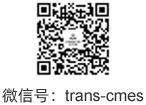|
[1]吕维洁,张荻,张小农,等.原位合成TiC/Ti复合材料的微结构和力学性能[J].上海交通大学学报,2010,35(5):643-646.
Lü Weijie,Zhang Di,Zhang Xiaonong,et al. Microstructure and Mechanical Properties of in Situ Synthesized TiC/Ti Composites[J]. Journal of Shanghai Jiaotong University, 2010, 35(5):643-646.
[2]Abkowitz S, Abkowitz S M, Fisher H, et al. Cerme Ti Discontinuously Reinforced Ti-matrix Composites: Manufacturing, Properties and Applications[J]. JOM, 2004, 56(5): 37-41.
[3]Saito T. Automotive Application of Discontinuously Reinforced TiB-Ti Composites[J]. JOM, 2004, 56(5): 33-36.
[4]吕维洁. 原位自生钛基复合材料研究综述[J]. 中国材料进展, 2010, 29(4): 41-48.
Lü Weijie. An Overview on the Research of In-situ Titanium Matrix Composites[J]. Materials China, 2010, 29(4): 41-48.
[5]耿 林, 倪丁瑞, 郑镇洙. 原位自生非连续增强钛基复合材料的研究现状与展望[J]. 复合材料学报, 2006, 23(1): 1-11.
Geng Lin, Ni Dingrui, Zheng Zhenzhu. Current Status and Outlook of in Situ Discontinuously Reinforced Ttitanium Matrix Composites[J]. Acta Materiae Compositae Sinica, 2006, 23(1): 1-11.
[6]黄陆军. 增强体准连续网状分布钛基复合材料研究[D]. 哈尔滨: 哈尔滨工业大学, 2010.
[7]谭靓,张定华,姚倡锋,等. 刀具几何参数对钛合金铣削力和表面完整性的影响[J]. 中国机械工程, 2015, 26(6): 737-742.
Tan Liang, Zhang Dinghua, Yao Changfeng, et al. Influence of Tool Geometrical Parameters on Milling Force and Surface Integrity in Milling Titanium Alloy[J]. China Mechanical Engineering, 2015, 26(6): 737-742.
[8]Ota M, Okida J, Harada T, et al. High Speed Cutting of Titanium Alloy with PCD Tools[J]. Key Engineering Materials, 2009, 389/390: 157-162.
[9]Corduan N, Hirnbart T, Poulachon G, et al. Wear Mechanisms of New Tool Materials for Ti6Al4V High Performance Machining[J]. CIRP Annals - Manufacturing Technology, 2003, 52(1): 73-76.
[10]Paulo Davim J. Machining of Metal Matrix Composites[M]. London: Springer London,2011.
[11]Hurtung P D. Tool Wear in Titanium Machining[D]. Boston: Massachusetts Institute of Technology,1981.
[12]Huan H X,Xu J H,Fu Y C,et al. Experimental Study on Turning of Titanium Matrix Composites with PCD Tools[J]. Materials Science Forum, 2013, 723: 20-24.
[13]Hayes S M,Ramulu M,Pedersen W E. Machining Characteristics of a Titanium Metal Matrix Composite[J]. Transaction of NAMRI/SME, 2001,29: 189-196.
[14]Bejjani R, Shi B. Laser Assisted Turning of Titanium Metal Matrix Composite[J]. CIRP Annals Manufacturing Technology, 2011,60(1): 61-64.
[15]Tomac N, Tannessen K, Rasch F O. Machinability of Particulate Aluminum Matrix Composites[J]. CIRP Annals - Manufacturing Technology, 1992, 41(1):55-58.
[16]危卫华, 徐九华, 傅玉灿,等. 置氢钛合金TC4的切削加工性研究[J]. 南京航空航天大学学报,2009,41(5):633-638.
Wei Weihua, Xu Jiuhua, Fu Yucan,et al. Machinability of Hydrogenating Titanium Alloy TC4[J]. Journal of Nanjing University of Aeronautics & Astronautics, 2009, 41(5): 633-638.
[17]李亮. 钛合金高速铣削机理及其工艺研究[D].南京:南京航空航天大学, 2005.
|



